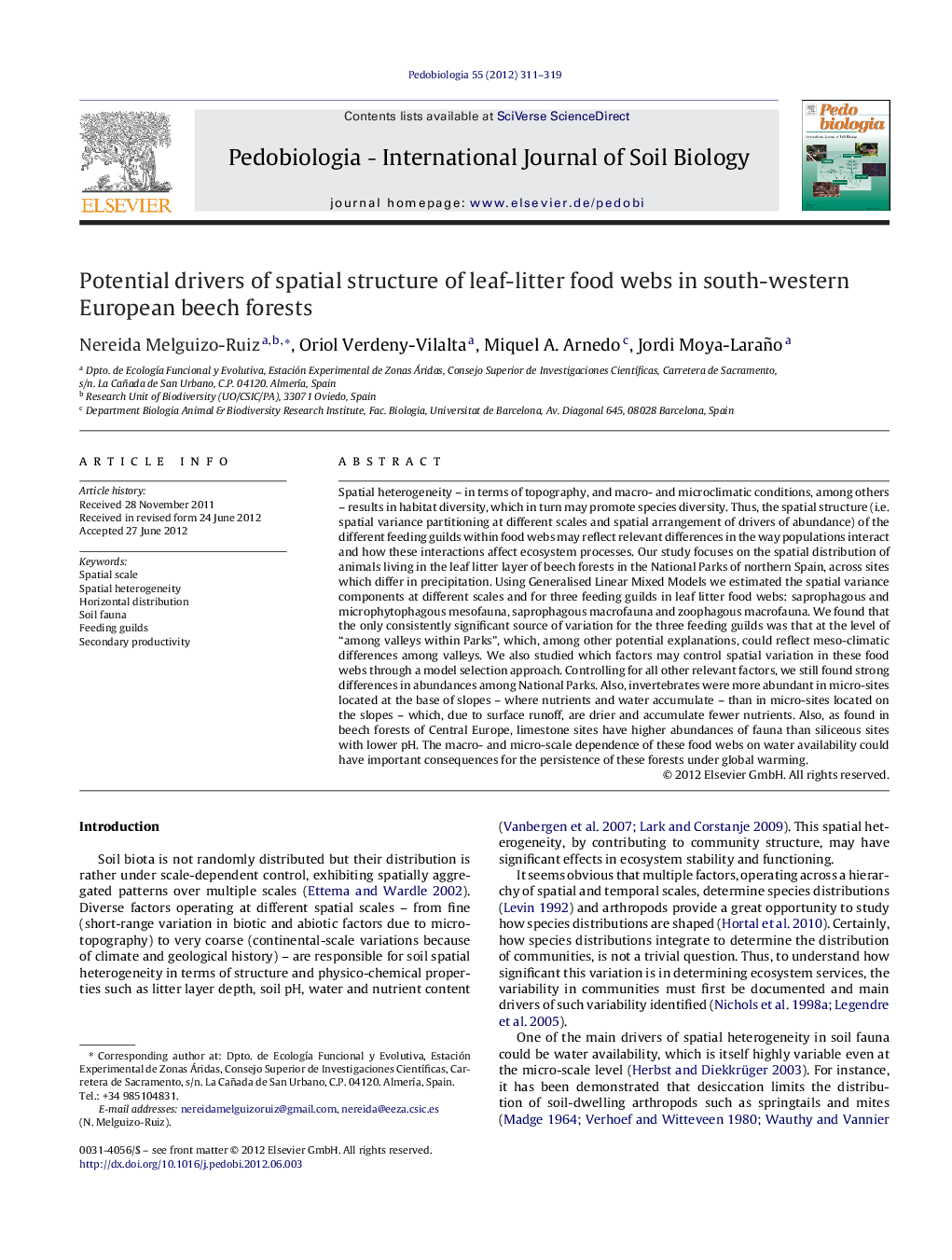| کد مقاله | کد نشریه | سال انتشار | مقاله انگلیسی | نسخه تمام متن |
|---|---|---|---|---|
| 2061452 | 1076488 | 2012 | 9 صفحه PDF | دانلود رایگان |

Spatial heterogeneity – in terms of topography, and macro- and microclimatic conditions, among others – results in habitat diversity, which in turn may promote species diversity. Thus, the spatial structure (i.e. spatial variance partitioning at different scales and spatial arrangement of drivers of abundance) of the different feeding guilds within food webs may reflect relevant differences in the way populations interact and how these interactions affect ecosystem processes. Our study focuses on the spatial distribution of animals living in the leaf litter layer of beech forests in the National Parks of northern Spain, across sites which differ in precipitation. Using Generalised Linear Mixed Models we estimated the spatial variance components at different scales and for three feeding guilds in leaf litter food webs: saprophagous and microphytophagous mesofauna, saprophagous macrofauna and zoophagous macrofauna. We found that the only consistently significant source of variation for the three feeding guilds was that at the level of “among valleys within Parks”, which, among other potential explanations, could reflect meso-climatic differences among valleys. We also studied which factors may control spatial variation in these food webs through a model selection approach. Controlling for all other relevant factors, we still found strong differences in abundances among National Parks. Also, invertebrates were more abundant in micro-sites located at the base of slopes – where nutrients and water accumulate – than in micro-sites located on the slopes – which, due to surface runoff, are drier and accumulate fewer nutrients. Also, as found in beech forests of Central Europe, limestone sites have higher abundances of fauna than siliceous sites with lower pH. The macro- and micro-scale dependence of these food webs on water availability could have important consequences for the persistence of these forests under global warming.
Journal: Pedobiologia - Volume 55, Issue 6, 10 November 2012, Pages 311–319